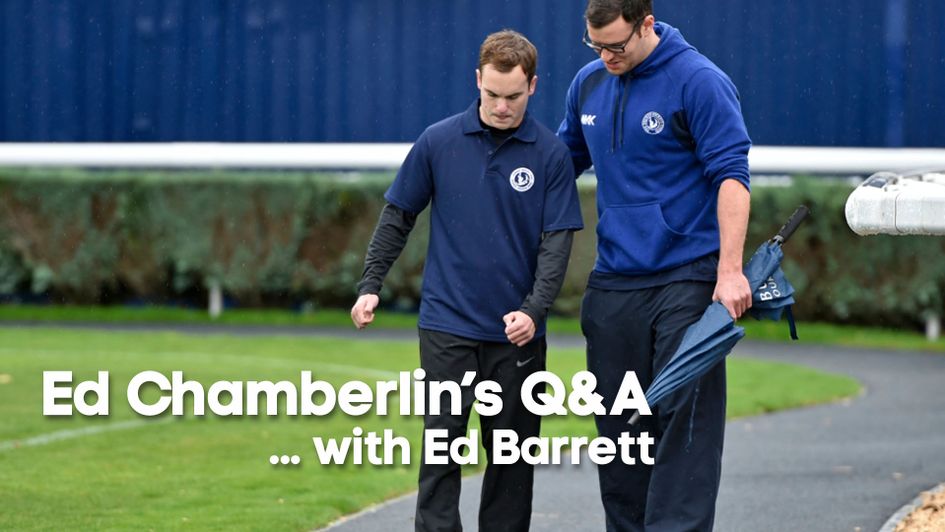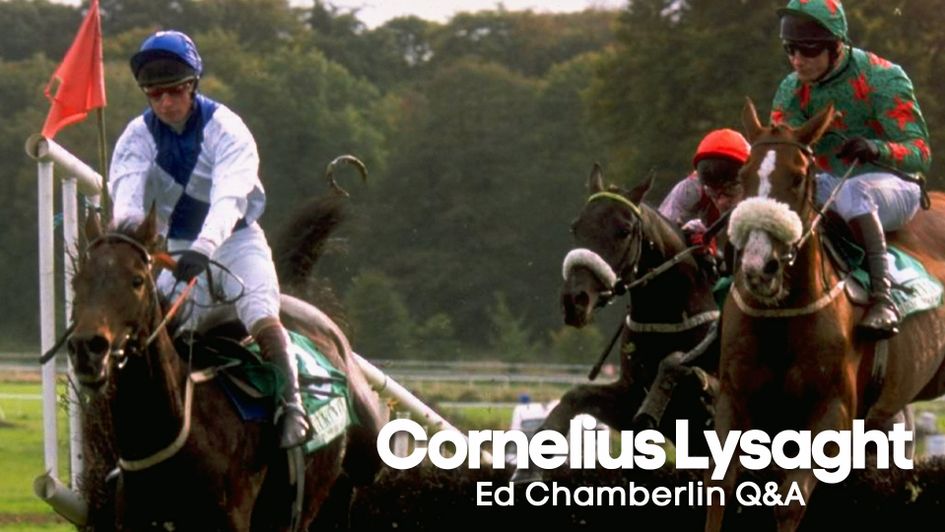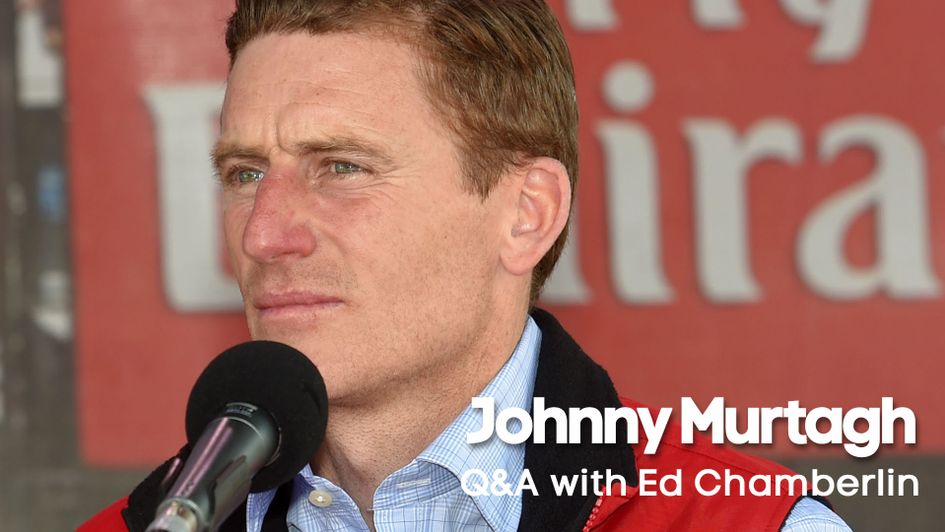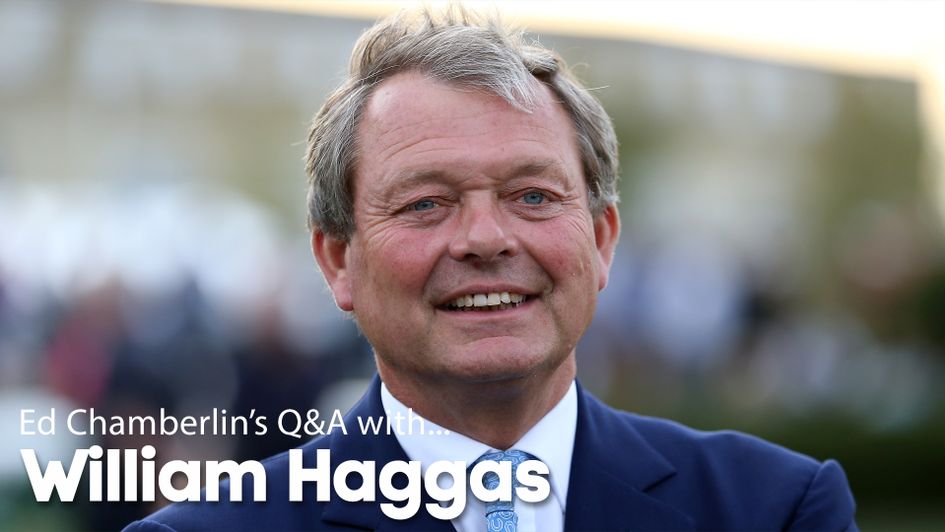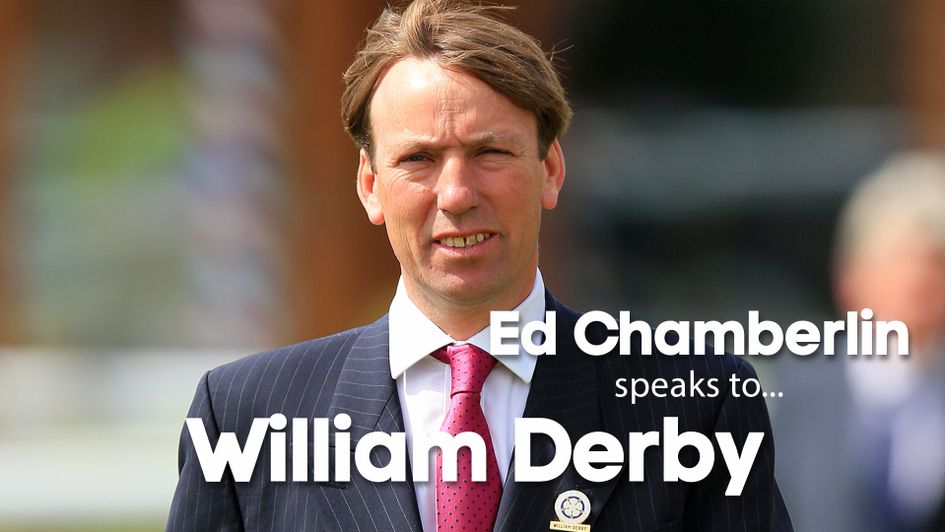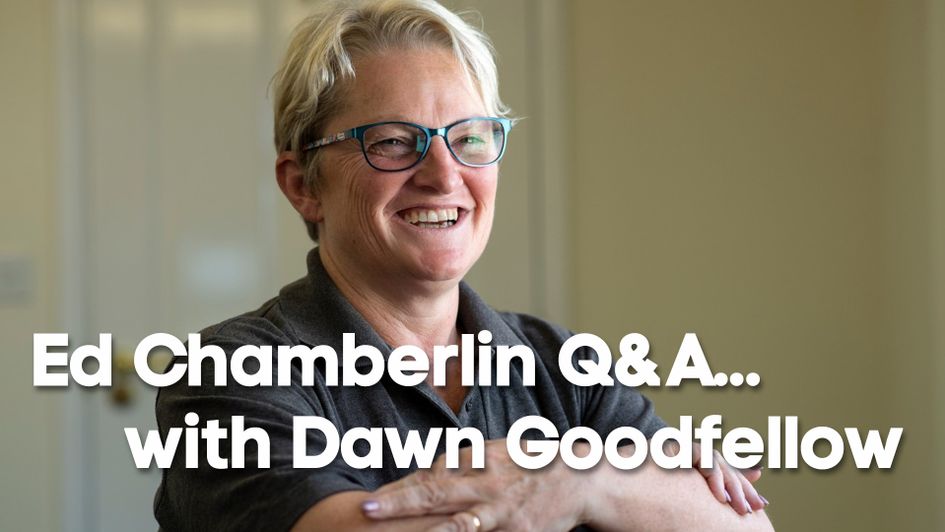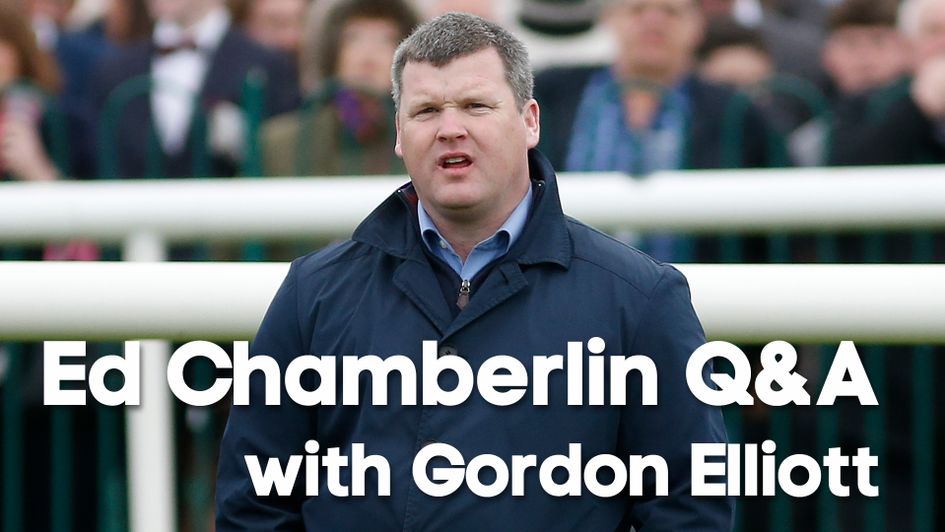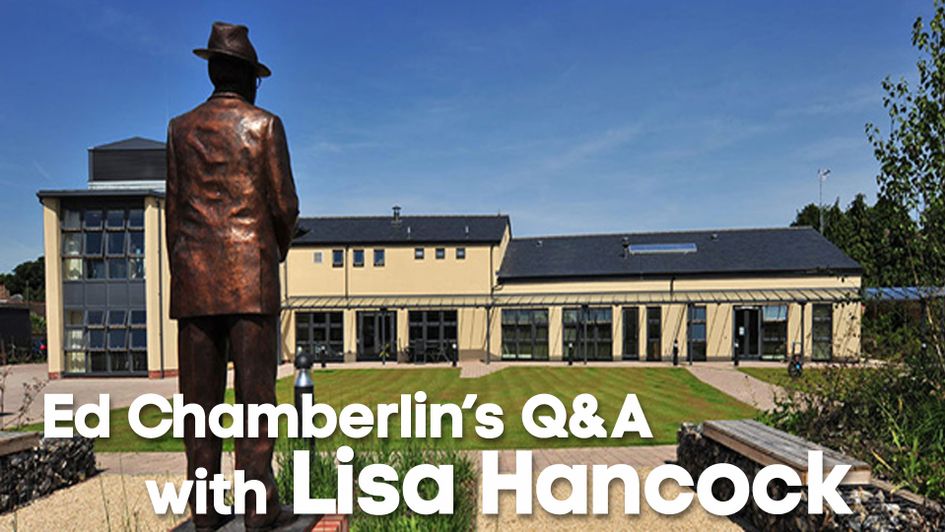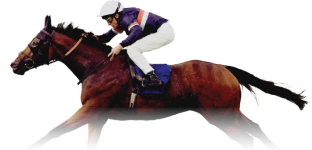After a life-changing fall in 2015, point-to-point rider Ed Barrett was told that he would never walk again – but the inspiring figure has gone on to do just that and raise significant sums for charity too.
Only three years after his accident he walked a circuit of the parade ring at Newbury and recently completed the 5K challenge.
Here he speaks to Ed Chamberlin.
Ed Chamberlin: A lot of people will have seen you on social media recently taking on the 5K challenge – how did it go?
Ed Barrett: It was a big challenge for me but it got me out of the house and doing something each day. I actually enjoyed it in the end!
EC: Let’s rewind the clock and find out why it was such a big challenge. We’ve just passed the five-year anniversary since your accident.
EB: We have. I was riding in a point-to-point. The horse I was riding was a good horse, I’d won on him before, but for some reason he just didn’t take the jump well and fell. When I was on the ground I got struck into by another horse and broke my neck. I was taken by air ambulance to Plymouth and had a nine-hour operation to basically put my head back in place. They basically reconstructed it, using pins and screws, and I spent three weeks there before they flew me to Oswestry Spinal Hospital where I stayed for five months to do rehab. I then went to Oaksley House and it’s been a long journey.
EC: How was your riding career going before the fall?
EB: Quite well. I’d ridden winners and under Rules a few times. I was doing it for the fun of it really but I knew the dangers of riding. I’m not saying I was quick to accept the injury, but if it had happened in a car accident or something I think I’d have been slower to. The fact it happened while I was doing something I loved made it easier to accept.
EC: When you say accept, is that the fact you are now so openly talking about what happened?
EB: I think I’ve just got a bit more used to it now. My mum actually said to me ‘Ed, it will take you five years to get over this’ and I kind of see where she was coming from. It’s been five years now and while I do think about the accident every single day, mentally I’m in a better place. I’m more for looking at what I can do rather than can’t do and setting myself little challenges every now and then has been good.
"Nothing prepares you for that"
— ITV Racing (@itvracing) September 22, 2018
Ed Barrett discusses his admirable journey back from an horrific injury pic.twitter.com/e8SS9vQUtV
EC: How difficult was the moment when you were told you wouldn’t walk again?
EB: I remember going in the ambulance and a chap feeling down my neck and saying it was broken but I knew instantly what I’d done. I felt a kind of guilt because I knew how it would affect my family, my dad was there and I knew it would devastate my mother and brother. It was hard in that way.
EC: That was going through your mind in the ambulance – at that time?
EB: It was but at the same time I was unbelievably calm and I don’t know why – I was thinking ‘you’ve had a good life up to now’. I was 25 at the time – I had my 26th birthday in hospital. It still hits me now and again though. I have bad days – as everyone does – but I’ve enjoyed incredible support along the way and the Injured Jockeys’ Fund have been wonderful, helping put me back together. A lot of people have an accident and spend four months in hospital and get sent home.
Because my spinal chord injury was incomplete, some messages get through to my legs, I was able to have access to really good physios at Oswestry and continue it at Oaksey House. I still have physios come to my house. That’s been a big help, not just physically but mentally. Meeting other jockeys who have had similar injuries really helped me too.
EC: Can you just explain what help the Injured Jockeys’ Fund provide – and how it works at Oaksey House?
EB: Clare Hill is my Almoner at the IJF and she has been a real rock for me. They first get involved when you’re in hospital and ask if there’s anything you need but support your family as well. Even now if I need a piece of equipment or am struggling with something I can give Clare a call and she’ll sort it out for me, if I need help with hospital appointments she’s there to sort it. That’s how the Almoners work and I think they’re one of the best things about the IJF.
EC: And Oaksey House has been a big part of your life?
EB: It has. I lived there basically and still go back every eight weeks and stay there for a week or two. It’s really good, I can use the gym and get physio and Gavin Egan, the Rehabilitation Therapist, Strength & Conditioning Coach, has been very good.
He helped me with the Newbury walk and it’s a social thing going down there too. It breaks up being at home on the farm but it’s nice to go down and see friends there – it’s good mentally and physically and they were a big help in the transition of hospital to home.
I was able to keep up my progress there. They have all the equipment, a hydrotherapy pool that I use a lot. It has a treadmill at the bottom and is very good for me as the water holds my body weight and I can walk without crutches. That’s been a big help and they’ve just helped transform by body.
When I left hospital I was literally skin and bone, and gradually over the years have put more muscle on. My consultant in the hospital said I’d make good progress for two years then plateau, but I disagree with that a little. You can always train a muscle to get stronger. I get what they meant, I made really good progress for six months and it died down after two years but I think if you keep up your strength and conditioning it really helps you in your day-to-day life.
Gavin has been amazing with me. He said to me the more work you can do in the gym for an hour or so each day, the easier your life will be and I totally get that. He simply telling me that really helped me focus on my training.
@OakseyHouse S&C Coach and Rehab Therapist Gavin Egan and Ed Barrett still finding the time and ways to fit their 1-2-1 work out sessions in, despite lockdown. Stay strong and well done guys 👏🏻💪🏻🏋️♂️🏇🏻💨 pic.twitter.com/sTeQahAnqQ
— Injured Jockeys Fund (@IJF_official) April 2, 2020
EC: It might not be easy for you to talk about but another huge part of your story has been your family and how strong they’ve been for you.
EB: It hit them very hard but they were aware of the dangers of racing riding too. They probably don’t tell me how they’re feeling all the time, they shelter me from it a little, but it has clearly impacted their life but also brought us closer together too. I was spending a lot of time in Devon and working away from home a lot and mum and dad said ‘if you hadn’t had the accident we’d have never seen you Ed!”
I’d have been here, there and everywhere, I’d have been never home. We are definitely closer as a family but of course it has impacted their lives too.
EC: It sounds as though they have been amazing but describe the home set-up now and everyday life?
EB: I’ve been in my new house for four months now and it’s literally about 100 metres from the farmhouse so I have my own independence. At the same time if I need any help my parents and brother are there to provide it. It’s good because I can still help with the family business and the riding school, there’s plenty for me to see on the farm and I see plenty of people too. I’m not just stuck on my own as some people are and am very lucky in that aspect. Even in the lockdown I’m able to go outside and do things - others don’t have that.
EC: It’s an incredible story – but just how low were the low points for you mentally?
EB: Nothing can prepare you for it. I still wake up now in a morning and think it’s a bad dream but then get on with my day. It’s still a shock and the low days have been very low but I try not to bottle it up too much. I’ll call a friend, and have a lot through the IJF who’ve suffered injuries, and rather than burden my family all the time, I’ll speak to them. I can let them know I’m having a shit day and need to talk about it and that’s really important.
EC: So your message to anyone who is struggling is have a good support network and pick up the phone?
EB: It has been very important for me. I was very low once when living at Oaksey House and there’s something for people who’ve suffered spinal injuries called Back Up. I got in touch with them and they put me in contact with someone who’d had a very similar injury to me.
He was a fireman who’d had an accident at work and damaged his neck. He had a lot of nerve pain and similar issues to me. I used to speak to him every day and it was really good. He knew what I was going through. If you have a spinal injury and speak to a regular person they don’t understand all the issues you get like nerve pain, bowel and bladder problems and the other things that come with it. It was really useful to find someone who did. If you’re down the best thing to do is reach out and speak to somebody.
Incredible stuff from Ed Barrett @NewburyRacing this afternoon pic.twitter.com/jy8J3SG0wG
— Fergal O’Brien Racing (@FOBRacing) September 22, 2018
EC: Let’s talk about the challenges you’ve done in recent years – where did the idea of walking a lap of the Newbury parade ring come from?
EB: Up in the Oaksey House gym there’s a blue mat which looks like a running track. I was up there with Gavin and we were playing around really and we put a box on it. He’d stand alongside me and I’d try to walk to it from the other end. Gradually each day we built up the distance. I’m not really supposed to walk without my crutches or carbon fibre leg splints, which stop my legs from hyperextending, but eventually I walked 150 metres all in one go without having a rest.
I was thinking to myself ‘where is there I can walk that sort of distance which people could watch and we could raise some money for charity too?’
I thought I need somewhere flat, safe if I fell over, and the paddock was ideal. It was soft if I fell over and one circuit seemed a good distance to do and that’s what I did. I was a bit reluctant at first but Gavin told me it was really good if I could have a challenge to aim at. I’d train harder at the gym and I mentioned it to a couple of people at Oaksey House who thought it was a great idea and said ‘you’ve got to do it now’.
EC: Could you believe the interest it sparked – you were in all the newspapers and featured on ITV and other channels?
EB: My social medial went through the roof! People were calling me all the time, I was on radio as well as the television. It was quite nice really!
EC: I remember finding it hard to speak on ITV off the back of seeing it. It was amazingly powerful.
EB: My family were there and at the end of it everyone was in floods of tears. I thought ‘this wasn’t the plan’ but I suppose it was a huge emotional release. To see me walking around there was a big thing for my family and friends. I’m good friends with George Baker but hadn’t known him long then and he said ‘Ed – you had in me in tears’.
I hadn’t realised the impact it would have. People knew my story. I literally couldn’t move from the neck down for three weeks after the accident and I had ten weeks’ of bed rest in the hospital when I was turned by the nurses every three hours. I couldn’t feed myself, wash, or do anything. Then three years later to see me walking the round the paddock was a lot for people to take in.
EC: Then – this year – you took on the 5K challenge. I bet your social media went mad again! I think Sir Anthony McCoy summed it best when he said “Absolute Class” but then didn’t he give you loads of stick about being better looking than him?
EB: He gives me loads of stick but has been absolutely brilliant. He treats me as normal and gives me the usual banter which I like. He’s been really good to me and very supportive. He invited me over to his house and I met all his family. He does so much behind the scenes for the IJF but never boasts or mentions it. He is such a kind man and he’s been wonderful with me.
Thanks to the inspirational good looking charismatic Ed Barrett for organising The Mintridge Charity Event for the @IJF_official @OakseyHouse ...As you can see Ed wrote this himself!! pic.twitter.com/p000OTgVKm
— AP McCoy (@AP_McCoy) October 4, 2019
EC: What’s next then Ed? What’s this about you playing tennis?
EB: It’s not really designed for someone with my type of injury because my hands are affected but I’ve been going to Gloucester and playing tennis. To get round it I’ve been taping the racket to my hand and wear gloves to grip.
There are two other people in chairs and I have a coach who feeds me the ball. I started off and couldn’t even hit the ball over the net but gradually got better and was on course do a competition this summer, just a low-key one, but it was something to look forward to. Obviously with the lockdown that’s off now but it’s something I plan to do more of.
I’d like to be competitive in it, I don’t know how competitive I can be as it isn’t something that suits my injury, but I really enjoy playing and it’s keeping up my fitness.
That’s something I like to do and I want to try sit skiing. Some of my friends have done it and it looks a lot of fun. It would be nice to be out in the open, it’s a form of freedom, and I’m interested in that. A friend who was injured at the same time as me does it. He’s shown me videos and it looks a lot of fun.
I try and promote IJF where I can. I try and do these challenges to give back – I’ve done the Newbury walk and did a big fundraising party after my cousin’s wedding which was really good. Next year I’m looking at the Superheroes Triathlon. It’s for people with disabilities. I think one person does the swim, one person does the hand bike and one does the run. That might be something cool to do next summer.
EC: One thing I’ve learned about you Ed is whatever you turn your hand to you’ll make it happen, it’s in your nature. You’ve got the competitive edge still too and I loved how you challenged others for the 5K. Wayne Burton and others did brilliantly didn’t they?
EB: It was really good for Wayne. He lives on his own and it really got him in the mood. He’s doing a lot more on his basketball court, he’s more active, and I purposefully did it for people who are injured as well. A lot were running 5K but I thought people could wheel 5K or do it on their hand bike and it’s been very well received.
The @IJF_official are amazing straight through. They do the absolute upmost to support everyone they possibly can in these desperate times right now. I have nothing but pride to be part of this fantastic charity. 🙌🏻#Respect@RacingTogether https://t.co/wX0xE27RuE pic.twitter.com/9iSaBrRdjN
— Wayne Burton (@wayne7burton) March 26, 2020






